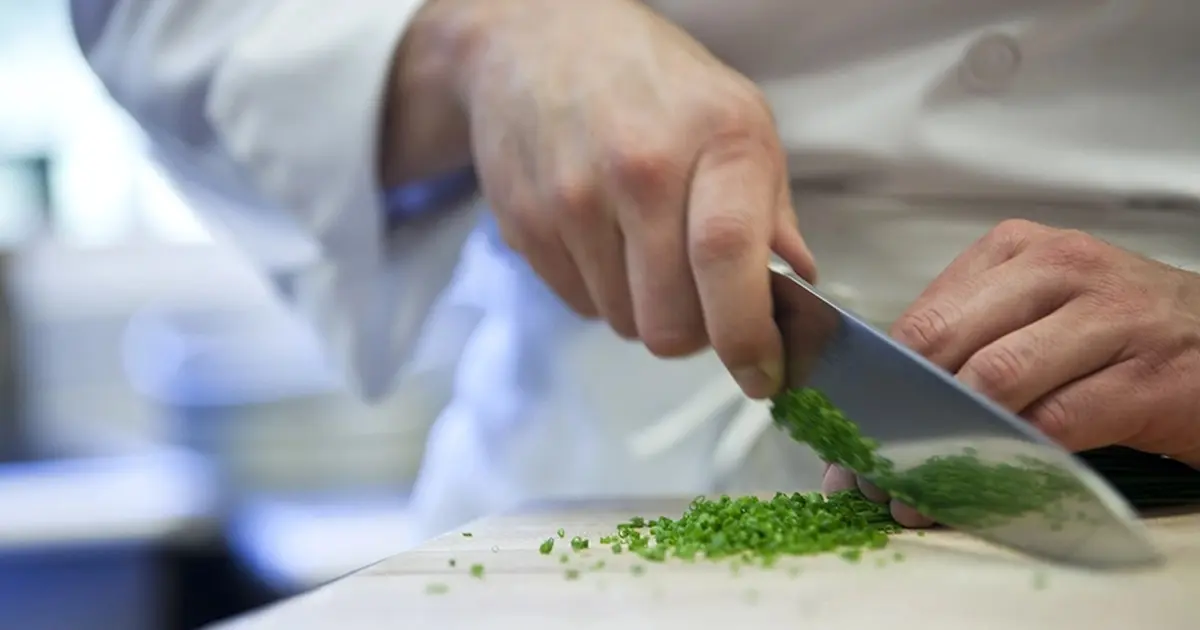
In the symphony of a well-equipped kitchen, the mastery of knife skills is the conductor, orchestrating precision, efficiency, and artistry. A chef’s most essential tool, the knife, comes in various shapes and sizes, each designed for a specific purpose. In this comprehensive guide, we’ll navigate through the world of essential kitchen knives, explore their uses, and delve into tips for honing the art of impeccable knife skills.

Table of Contents
ToggleUnderstanding the Blade: Your Essential Arsenal
1. Chef’s Knife: The Workhorse
Recognized for its versatility, the chef’s knife is your kitchen’s multitasking maestro. From slicing to dicing, its broad, curved blade handles it all.

2. Paring Knife: Precision in Small Packages
For intricate tasks like peeling and trimming, the nimble paring knife is your go-to. Its small size offers unmatched control.

3. Serrated Knife: The Bread and Beyond
Beyond bread, a serrated knife excels at slicing delicate items without crushing, making it perfect for tomatoes, fruits, and cakes.

4. Utility Knife: Versatile Mid-Size Performer
Bridging the gap between chef’s and paring knives, the utility knife is ideal for tasks requiring more precision than a chef’s knife but more length than a paring knife.

5. Boning Knife: Precision for Meat and Fish
Navigate bones with ease using a boning knife. Its narrow, flexible blade is perfect for deboning meat and filleting fish.

Essential Knife Skills: The Dance of Precision
1. Grip and Posture:
Adopt the pinch grip for control and balance. Maintain a relaxed but firm grip and stand with a slight bend in your knees for stability.
2. The Rocking Motion:
Master the rocking motion with your chef’s knife. This technique ensures smooth and efficient chopping, allowing for precision in your cuts.
3. Proper Cutting Techniques:
Understand rocking for chopping herbs, slicing for vegetables and meats, and dicing for consistent cut sizes. Each technique has its place in the culinary repertoire.
4. Honing vs. Sharpening:
Differentiate between honing and sharpening. Regular honing keeps the edge aligned, while sharpening involves removing metal to create a new edge.
5. Knife Care and Maintenance:
Treat your knives with care. Hand wash promptly, avoid harsh detergents, and always dry immediately. Store knives properly in a knife block or magnetic strip.
Tips for Honing Essential Knife Skills: Refining Your Craft
1. Practice Regularly:
Like any skill, knife proficiency improves with practice. Set aside time to hone your skills with different cutting techniques.
2. Use the Right Knife for the Task:
Choose the right knife for each job. Using the appropriate tool not only enhances efficiency but also preserves the life of your knives.
3. Maintain Sharpness:
Regularly hone your knife with a honing rod to keep the edge aligned. Sharpen the blade as needed to ensure optimal cutting performance.
4. Invest in Quality Knives:
Quality knives are an investment in your culinary journey. Choose knives with a comfortable grip that suits your hand.

5. Learn Knife Safety:
Knife safety is paramount. Always cut away from your body, use a stable cutting surface, and keep your fingers in a claw-like position to prevent accidents.

Embrace the Artistry of Culinary Precision
In mastering the art of knife skills, you’re not just slicing and dicing; you’re conducting a symphony of flavors and textures. Each precise cut brings you closer to culinary perfection. So, embark on this culinary journey, honing your skills with every chop, and let the artistry of knife skills elevate your kitchen endeavors. Happy slicing!





Leave a Reply